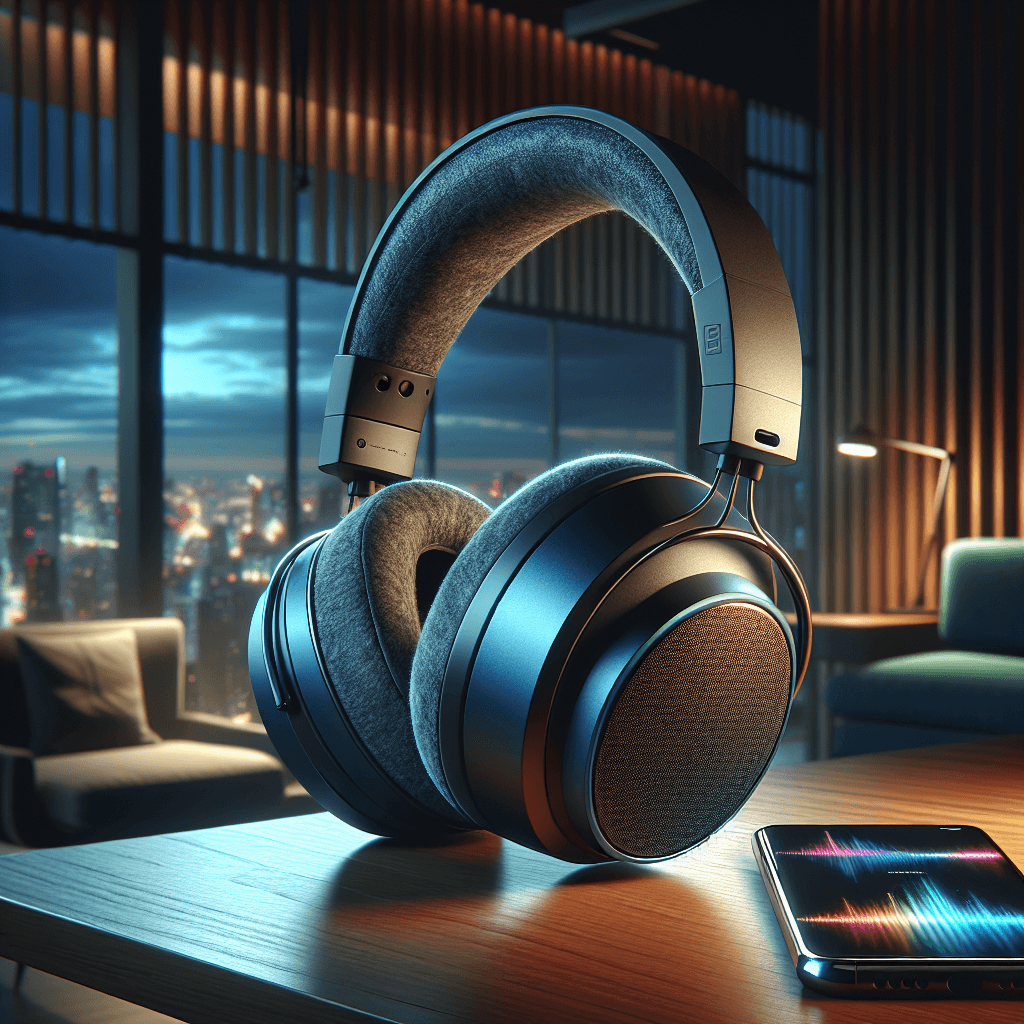
“Confused about audio gear for beginners in 2025? You’re not alone. Whether you’re building your best beginner audio setup or debating wired vs. wireless headphones, this guide cuts through the noise. We’ll show you what’s worth buying—and what to skip—so you can enjoy great sound without wasting money. Let’s dive in!”
Audio Gear for Beginners 2025:
Stepping into the world of “good audio” can feel like diving into an ocean of jargon, endless product reviews, and intimidating price tags. From DACs and amps to planar magnetics and balanced armatures, the sheer volume of information can be overwhelming. Many aspiring audiophiles or simply those looking to improve their listening experience get lost before they even begin, wondering what gear is genuinely essential and what’s just marketing fluff.
If you’re new to audio and want to elevate your sound without breaking the bank or getting bogged down in unnecessary complexities, you’ve come to the right place. This guide will cut through the noise, showing you the foundational gear you truly need to start your high-fidelity journey, and what you can safely skip for now.
The Essential Gear You ACTUALLY Need

Forget the fancy setups you see online for a moment. Great audio starts with just a few key components.
1. Quality Headphones or Earbuds: Your Most Important Investment
This is, without a doubt, the single most crucial piece of your audio puzzle. Your headphones or earbuds are the direct interface between the sound and your ears. No matter how good your other equipment is, if your transducers (the part that converts electrical signals into sound waves) are poor, your audio will suffer.
- Why it’s essential: They dictate the fundamental sound signature, detail retrieval, and overall clarity you experience. A $500 pair of headphones connected to a smartphone will almost always sound better than a $50 pair connected to a $500 DAC/amp.
- What to look for:
- Comfort: You’ll be wearing them for extended periods.
- Sound Signature: Look for balanced, clear sound, not just boosted bass. Read reviews from reputable audio sites.
- Type:
- Over-ear/On-ear (Closed-back): Good for noise isolation and immersive listening at home or in noisy environments.
- Over-ear (Open-back): Often provide a wider, more natural soundstage, ideal for critical listening in quiet environments (sound leaks out).
- In-Ear Monitors (IEMs): Offer excellent passive noise isolation and direct, detailed sound. Great for portable use.
- True Wireless Earbuds: The ultimate in convenience, with decent sound quality improving rapidly.
- Budget: You can find excellent options starting from $50-$100 that offer a significant upgrade over bundled earbuds. As you go higher, the improvements become more refined.
2. A Decent Audio Source Device
This is simply what plays your music. For most beginners, this will be a device you already own.
- Your Smartphone: Modern smartphones often have surprisingly capable built-in Digital-to-Analog Converters (DACs) and headphone amplifiers. For starting out, your phone is perfectly adequate.
- Your Computer/Laptop: Similarly, a computer can be a great source. Ensure your audio drivers are up to date.
- Dedicated Digital Audio Player (DAP) (Optional, for later): If you eventually want to move beyond your phone and carry a dedicated device for high-resolution audio files, a DAP can be a good step, but it’s not necessary for beginners.
3. High-Quality Music/Audio Files
Your gear can only reproduce the quality of the source material. Garbage in, garbage out!
- Lossless Streaming Services: Services like Tidal, Apple Music (with Lossless Audio), Amazon Music HD, or Qobuz offer CD-quality (16-bit/44.1kHz) or even high-resolution (24-bit/up to 192kHz) streaming. This is a massive step up from standard compressed MP3s or lower-tier streaming.
- High-Resolution Audio Files: If you prefer to own your music, look for FLAC, WAV, or DSD files.
- Why it’s essential: Even with the best headphones, highly compressed audio files will sound flat and lacking in detail.
What You Can Safely SKIP (Initially)

Don’t fall into the trap of thinking you need everything at once. These components can enhance your experience later, but they are not prerequisites for good sound.
1. External DACs and Amplifiers (for most beginners)
- What they are: A DAC (Digital-to-Analog Converter) converts digital audio signals (from your phone/computer) into analog signals that headphones can play. An amplifier boosts that analog signal to drive your headphones.
- Why to skip initially: While they can improve sound quality, especially with high-impedance headphones, modern smartphones and computers often have perfectly capable built-in DACs and amps for entry-level to mid-range headphones. You won’t hear a significant difference with basic earbuds. Invest in better headphones first.
- When to consider: If you get high-impedance (e.g., 250-600 ohm) headphones, or if you notice a distinct lack of power or clarity from your source device with your existing quality headphones.
2. Expensive Audio Cables
- The Myth: That expensive cables drastically improve sound quality.
- The Reality: For most standard audio connections (3.5mm, USB, optical), the audible difference between a basic, well-made cable and a ridiculously expensive “audiophile” cable is negligible, if any. Focus on durable, functional cables.
- Why to skip: This is often one of the last things to upgrade, and only after you’ve optimized every other part of your chain.
3. “Gaming Headsets”
- Why to skip: As discussed in our post, Why Pro Gamers Don’t Use “Gaming Headsets” — And What They Use Instead, these often compromise on sound quality and microphone performance in favor of aggressive aesthetics or unnecessary features. A good pair of studio headphones paired with a separate, affordable USB microphone will almost always offer superior audio for both gaming and communication.
4. Vinyl Records and Turntables (as a primary entry point)
- Why to skip initially: While vinyl offers a unique listening experience and a tactile hobby, it’s an expensive rabbit hole. A decent turntable, phono preamp, and speaker setup will cost significantly more than a good pair of headphones and a streaming subscription. It’s an excellent addition to a hi-fi journey, but not the place to start if your primary goal is just better sound quality.
5. Complex Home Theater Systems (unless that’s your goal)
- Why to skip: If your focus is personal audio (headphones/earbuds), a multi-speaker home theater setup is a completely different beast with different requirements and a much higher cost. Stick to what you want to improve first.
Your Beginner Audio Journey: Simple Steps to Great Sound
- Start with the Headphones/Earbuds: Allocate the majority of your initial budget here. This is where you’ll get the most significant improvement in sound quality.
- Use Your Existing Devices: Your smartphone or computer is a perfectly capable source to begin with.
- Upgrade Your Music Quality: Subscribe to a lossless streaming service.
- Listen Critically: Pay attention to what you hear. Do you want more bass? More clarity? A wider soundstage?
- Upgrade Incrementally: Once you understand your preferences and the limitations of your current gear, then consider adding a DAC/amp or exploring different headphone types.
By focusing on these core elements and avoiding unnecessary purchases, you’ll be well on your way to enjoying a truly elevated audio experience without the confusion or the exorbitant cost often associated with the audiophile world. Happy listening!
Further Reading

- You Won’t Believe What We Found Inside These $200 Earbuds: Dive into what makes quality earbuds tick: /you-won-t-believe-what-we-found-inside-these-200-earbuds/.
- Why Your Earbuds Sound Terrible (and How to Fix It in 5 Minutes): Ensure your current earbuds are performing their best: /why-earbuds-sound-terrible-fix/.
- Complete Guide to Choosing Bluetooth Earbuds: A comprehensive guide if you’re leaning towards wireless freedom: https://gearforaudio.com/complete-guide-to-choosing-bluetooth-earbuds/.
- Top Music Streaming Apps for Fitness Buffs in 2025: Find the best platforms for high-quality audio streaming: /top-music-streaming-apps-for-fitness-buffs-in-2025/.
FAQ: Audio Gear for Beginners (2025 Guide)

1. What audio equipment do I need as a beginner?
Start simple:
✅ Headphones/IEMs – Wired options like the Moondrop Aria 2 ($80) offer great sound.
✅ DAC/Amp (if needed) – A $9 Apple USB-C dongle works for most phones/laptops.
✅ Source – Spotify (Hi-Fi tier) or Tidal for better quality.
🚫 Skip: Fancy cables, tube amps, or ultra-expensive gear until you know your preferences.
2. Is expensive audio gear worth it in 2025?
Not for beginners. Diminishing returns hit fast—a $300 setup (headphones + DAC) gets you 90% of the way. Save big purchases (like $1,000+ headphones) until you’ve trained your ears.
3. What’s a good beginner audiophile setup for 2025?
Under $300:
Headphones: Sennheiser HD 560S ($150)
DAC/Amp: FiiO K3 ($120)
Music Source: Spotify Hi-Fi (or Qobuz for lossless)
4. What cheap audio gear actually sounds good?
Budget gems (2025):
IEMs: Truthear x Crinacle Zero ($50)
Headphones: AKG K361 ($100)
DAC: Apple USB-C Dongle ($9) (Yes, really!)
5. How do I start with wired headphones?
Pick a headphone (see above).
Check your source – If your phone/laptop has a decent DAC, skip extra gear.
Try before upgrading – Use them for a month before buying amps/cables.
6. Should I go wireless instead?
Only if:
You prioritize convenience (gym, commuting).
You hate dealing with cables.
🔍 Note: Wireless tech (like LDAC) has improved, but wired still sounds better at low budgets.
7. What’s the biggest beginner mistake?
Buying “magic” gear (like $500 cables) instead of learning what you like. Start cheap, upgrade slowly.

